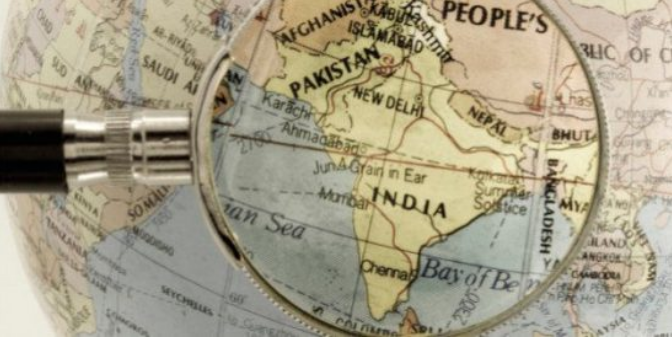
by Ghulam Suhrawardi
The media is supposed to be the fourth pillar of a functioning democracy. The biggest democracy in the world runs a press that is aligned with the government in power and is being used to soften the path for extremist Hindu governments to achieve political gains while demonizing a neighbor who derailed their grasp. While the interim government in Bangladesh is struggling to maintain law and order by reforming the police and other government institutions, Indian media flooded their channels with aggressive rhetoric about minority suppression in Bangladesh.
This article highlights significant geopolitical shifts in South Asia, focusing on India’s strained relations with its neighbors, particularly Bangladesh. The interplay of media influence, political maneuvering, and historical context creates a complex scenario where narratives often shape international perceptions.
Hasina fled Bangladesh on 5 August rather than face the millions of protesters ramming into her official residence. Thanks to Indian help, Hasina was airlifted from Bangladesh flawlessly. She has been housed in special quarters in New Delhi, from where she spews her vitriol against the interim government headed by Dr. Mohammed Yunus, a Nobel Laureate.
The financial beneficiaries of her entourage also left Bangladesh under various covers, mainly to India and a few other countries like the U.K., USA, and Canada. A recent white paper submitted by a commission appointed by the interim government has tabulated the extent of corruption during the Hasina administration. Dr. Debapriya Bhattacharya, a Bangladesh economist and public policy analyst, headed the commission. The robber barons smuggled over 100 billion dollars out of the country in various forms. This money is used to finance outcry from the diaspora and international and Indian media. It’s a win-win situation for the BJP government headed by Modi, who uses this rhetoric to gain a foothold for his party in the West Bengal and other Indian state legislatures.
Termed as the misinformation capital of the world, Indian media has been constantly blaring against the interim government that is trying to bring some stability to Bangladesh. The media outcry makes it very clear that their main intention is to bring down the Yunus-led government and again install their obedient Hasina regime. It seems like a pipe dream, yet the media keeps blaring.
Patriotic Bangladeshis, both Hindus and Muslims, have a firm resolve to unity despite the barrage of attacks based on misinformation coming from India. Suddenly, the media is trying to portray their support for humanity by citing false narratives. They even invoked the word “massacre” of Hindus in Bangladesh, which is far from the truth and unsubstantiated. Yes, there were mob attacks against the fleeing ruling party followers, which included a lot of Hindus. But the Hindus were not isolated, particularly like what is done in India targeting the Muslims. Hindus enjoyed a cozy relationship with the Hasina regime, and therefore, the mob attacks were directed on account of political ties rather than their religious affiliation. Indian media played this as a Hindu genocide.
Some analysts believe the Hindu Extremist government of India has used the media to prepare its onslaught for political gains in the local state elections. This is tarnishing the democratic values espoused by a lot of Indians. India is being portrayed as an extremist Hindu state, which has not been popular in the South Asian neighborhood. Claims of communal targeting and the political utility of such narratives raise concerns about the politicization of religious identity in both countries. This can fuel long-term instability and cross-border tensions.
An Indian magazine, Swarajya suggests that India should dissect Bangladesh into two states, moving the Hindus to the Northwest and calling it Hindudesh. These rhetorics are fodder for the Hindu extremists in India that help the BJP’s grip. Bangladesh is the last nation that is parting with its relationship with India on Indian terms. With Bangladesh’s departure as a friend of India, there are no other countries in the neighborhood where India has a friend—China, Pakistan, Afghanistan, Sri Lanka, Nepal, Bhutan, Burma, and the Maldives.
The critique of India’s “Neighborhood First” policy underscores New Delhi’s challenges in fostering stable, cooperative relationships with its neighbors. If ties with Bangladesh deteriorate, India could face increased regional strategic isolation. Modi is implementing “Your neighbor is your natural enemy, and the neighbor’s neighbor is your friend.” (Chanakya Kautilya).
If India’s neighborhood policy is perceived as coercive or self-serving, it could invite more significant influence from rivals like China, further complicating South Asia’s geopolitical landscape.

